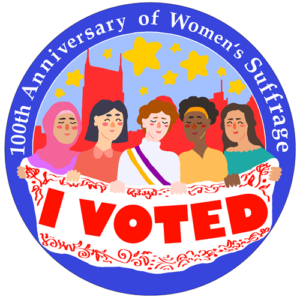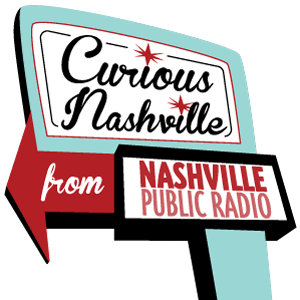
Tennesseans head back to the polls starting Wednesday for early voting in local primary elections. That means those “I Voted” stickers will start making the rounds.
Nicholas Qualls, of Antioch, wanted to know more about the stickers and asked Curious Nashville:
What determines what location gets what “I Voted” sticker? My location had a pretty generic oval sticker, but I see several people at other locations get a neater Tennessee-shaped red one.
First off, the generic oval he refers to — the ubiquitous one with the billowing American flag — dates back to 1987, according to a sticker history by TIME. That decade, in particular, saw growing interest in handing voters a symbol to wear after casting a ballot.
“I like showing that I voted,” Qualls says. “If I’m going to go through the effort of taking a photo of myself with a sticker, I want it to look nice.”
 File photo WPLN News
File photo WPLN NewsTennessee has printed a few versions of a state-shaped red sticker, seen here in 2016.
Qualls hits on a key point. The thought behind the stickers is to try to pump up turnout through awareness and peer pressure.
As Marketplace points out, studies about their effectiveness have not been conclusive.
But election administrators, like Jeff Roberts in Davidson County, tend to think highly of them.
“The voters in Davidson County really expect the sticker,” he says. “It’s one of the highlights of voting, I think.”
Roberts oversees the closet where the city keeps a stockpile of roughly 1 million voting stickers. Those include the red Tennessee-shaped ones, which come from the state government. And there’s also one illustrated by a local student to commemorate women’s suffrage, which Roberts says was really popular when it debuted in 2020.
 Courtesy of the Nashville Mayor's Office
Courtesy of the Nashville Mayor's Office A Nashville student won a design contest with this voting sticker in 2020.
As to Qualls’ question about sticker distribution, Roberts likes to send a variety of designs to each precinct. And he tries to keep the stock fresh out of fear that old ones could fall off.
“It’s not that we’re checking the stickiness, but if we make sure we send out the oldest ones first, that puts us in a good position to know that in all likelihood it’s gonna stick,” he says.
As the last few years have shown, people can get worked up about elections, so Roberts would rather keep the sticker drama to a minimum.
The state, meanwhile, says it bought about 3.5 million stickers for 2022, at a cost of about $10,590.
Correction: A earlier version of this story overstated the cost of voting stickers. The state spent $10,590, not $105,000.


